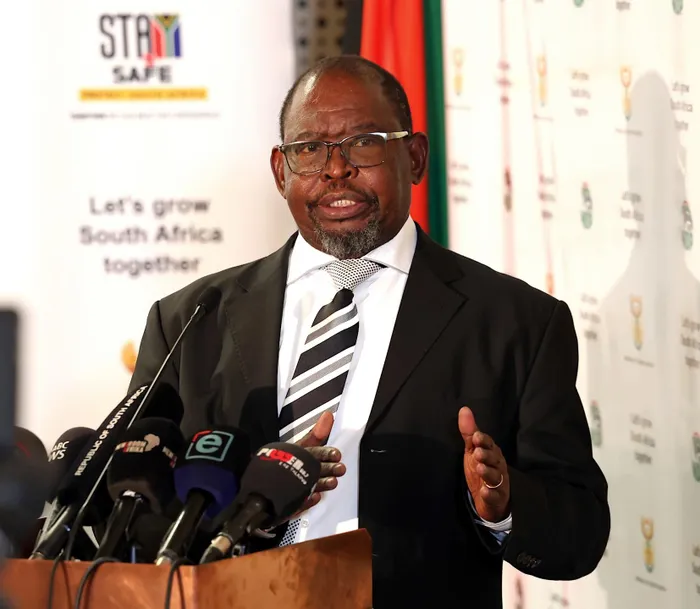Government debt projected to hit R6 trillion as South Africa borrows R1.6 billion daily
BUDGET

Finance Minister Enoch Godongwana told Parliament that the gross government debt was expected to increase from R5.69 trillion in 2024/25 to R6.09trln in 2025/26, and R6.82 trln in 2027/28.
Image: Supplied
South Africa's public debt is set to surge to unprecedented levels in relation to gross domestic product (GDP) over the 2025/26 fiscal year.
This comes as the national government will be borrowing an average of R1.6 billion per day on the back of rising spending demands and insufficient additional revenue.
According to the Budget Review 2025 documents released on Wednesday, the gross borrowing requirement for the government has increased from R579 billion at the time of the 2024 Budget to R588.2bn in 2025/26.
This means that the government's borrowing requirements will see Treasury going to the market to raise at least R1.61bn everyday of the year, up from a daily average of R1.58bn.
The National Treasury said this borrowing requirement will be financed through a combination of domestic short- and long-term loans, foreign-currency loans and the use of cash balances.
Finance Minister Enoch Godongwana told Parliament that the gross government debt was expected to increase from R5.69 trillion in 2024/25 to R6.09trln in 2025/26, and R6.82 trln in 2027/28.
However, he said the gross borrowing requirement was projected to decline by a total of R30.2bn between 2024/25 and 2027/28, mainly due to lower projected spending relative to the March 2025 Budget Review.
Godongwana said the May 2025 Budget Review aimed to stabilise government debt in 2025/26 while increasing infrastructure investment to support higher economic growth.
He said additional revenue and expenditure measures were required to stabilise the public finances in the context of weaker-than-anticipated global and domestic economic growth.
"In 2025/26, government debt is projected to stabilize at 77.4% of GDP. While this is 1.2% higher than projected in the March 12 budget, it is mainly due to lower nominal GDP," Godongwana said.
"The main budget deficit decreases by R8bn over the Medium-Term Expenditure Framework, compared to our estimates in March. This narrower deficit is enabled by the steadily expanding primary surplus. By 2027/28, the primary surplus will grow from an estimated 0.8% of GDP in this financial year to 2.1%."
Last week, S&P Global ratings agency warned that South Africa's debt-to-GDP ratio could rise as high as 80% in the medium-term, a prospect that would result in the government being constrained to meet basic service requirements.
Meanwile, debt-service costs - at R426.3bn - will consume 22 cents of every rand collected in revenue in 2025/26. The government will spend R1.35trln servicing the debt over the three-year spending period.
"Put differently, this means in 2025/26 alone we are spending around R1.2bn per day to service our debt. This is more than what we spend on frontline services such as health, the police and basic education," Godongwana said.
"We must maintain our efforts to reverse this trend, and prevent the cost of debt from robbing us of resources that could otherwise be spent on pressing social needs, or to invest in growth. This fiscal strategy is how we will drive down the debt to GDP ratio, slow the growth in debt service costs and rebuild our fiscal buffers. And in this way shield ourselves from an increasingly uncertain and unpredictable external environment."
Visit: www.businessreport.co.za